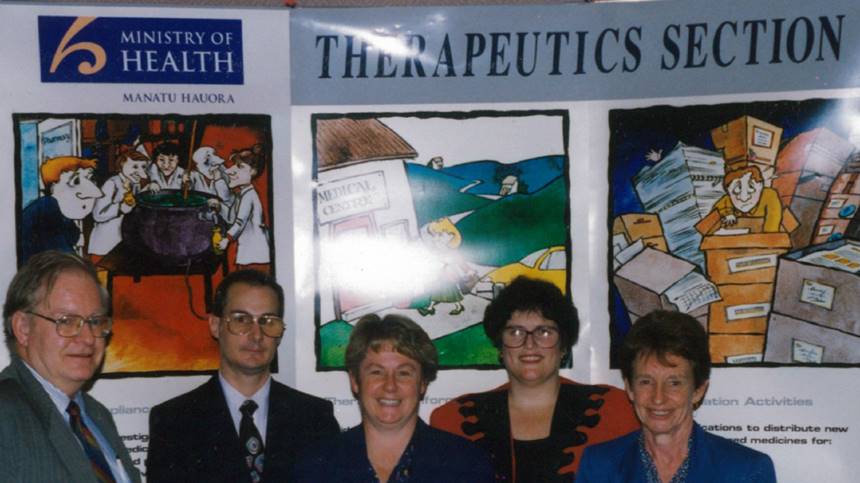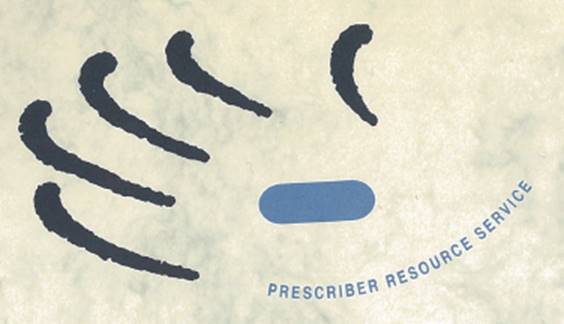Published: 18 March 2019
About Medsafe
History of Medicines and medical device regulation in New Zealand
Regulation under the Medicines Act 1981 until the creation of Medsafe (1981 to 1998)
Legislation
The 1969 Food and Drug Act was replaced with the Medicines Act 1981 and the Medicines Regulations 1984. The new legislation increased the controls on medicines and the distribution chain, required medicine manufacturers to be licenced and introduced a requirement for data sheets for some medicines.
In 1994 work on updating the Medicines Act 1981 resulted in a consultation on the proposed new legislation. The 1981 Act was deemed to not reflect international trends in medicine and device regulation or provide adequate regulatory controls. However, update to the legislation did not proceed.
Medicines and medical devices discussion paper on the review of the medicines legislation 1994
Organisational structure
The Therapeutics Section of the Department of Health administered the legislation.
The Section Mission statement of the Section was:
To promote and protect the health of all New Zealanders by:
- minimising the risks of unsafe, poor quality, or ineffective therapeutic goods
- improving acceptance of and compliance with safety and quality standards in the manufacture, distribution, promotion and prescription of medicines and other forms of therapy
- achieving greater prescriber and public awareness about the rational and safe use of medicines and other therapeutic options
By 1992 the Section had three departments (26 staff in total).
The Evaluation team had 9 staff and was responsible for evaluation of data submitted in support of applications to market new medicines or changes to existing medicines, working with the Medicines Assessment Advisory Committee (MAAC), applications for clinical trials supporting the Medicines Adverse Reactions Committee (MARC) and the National Toxicology Group (which changed to the Centre for Adverse Reaction Monitoring in 1993).
The Compliance team had 5 staff responsible for surveillance of medicines and medical devices on the market, medicines manufacturing licence audit and issue as well as oversight of medical advertising.
The Utilisation team had 11 staff responsible for prescriber education, the Medicines Classification Committee and projects such as the generic substitution project.
Medicines Control (16 staff) joined the Section in July 1993. Medicines Control was responsible for the medicine distribution chain, pharmacy licensing and surveillance of controlled drug usage.
The Section was partly funded by the crown and partly by fees.
Therapeutics Section Bulletin 1992 (pdf 17,534 KB, 12 pages)
Therapeutics Section Bulletin Jun 1993 (pdf 16,163 KB, 12 pages)
Therapeutics Section Bulletin Dec 1993 (pdf 10,237 KB, 15 pages)
Therapeutics Section Bulletin 1995 (pdf 11,103KB, 16 pages)
Therapeutics Section Bulletin Jan 1996 (pdf 21,956 KB, 16 pages)
Therapeutics Section Bulletin Nov 1996 (pdf 29,834 KB, 20 pages)
Committees
The Medicines Assessment Advisory Committee, had two subcommittees for generic medicines and vaccines.
The Medicines Adverse Reactions Committee took over form the Committee on Adverse Drug Reactions.
The Medicines Classification Committee, replaced the scheduling committee.
The Medicines Review Committee was formed to review complaints.
Workload
Data sheets were distributed by the Section. 30 approved copies were required to be supplied to the Ministry by the company. The paper copies were put into ring binders and given to various organisations such as, drug information centres, the Pharmaceutical Society, Medical and Pharmacy School libraries and pharmaceutical computing companies.
The interchangeable medicines list was launched in 1994, following the generic substitution review.
1993 – 1995 a project was initiated to transfer information about all approved medicines from a manual card system to an electronic database (TSD). This involved verifying all information entered into the database from Ministry files, and confirming its accuracy against the marketed product with the company. This information was then transferred to SMARTI. SMARTI, purchased in 1995 was a version of the Swedish regulator’s database. It was launched 9 March 1998. At the start the database contained information on around 4500 medicines.
The Prescriber Resource Service stopped visiting GPs at their practices in 1996.
In 1996 a project to develop a code of practice for Consumer Medicine Information went out to consultation. This resulted in the current format for Consumer Medicine Information.
Study of consumer views and expectations of consumer medicine information CMI 1996
Communication
The following publications were advertised by the Section.
Code of good practice for manufacture and packaging of cosmetics 1982
Medicine distribution guide 1993
Manufacture and packaging of dietary supplements 1988 (never part of medicines regulatory function)
New Zealand code of Good Manufacturing Practice for manufacture and distribution of therapeutic goods 1993
Prescriber Update replaced Clinical Services letter in 1993
Silicone gel breast implants 1994
Medicines medical devices & dietary supplement: report on the analysis of submissions on proposals to reform the regulation of therapeutic products







